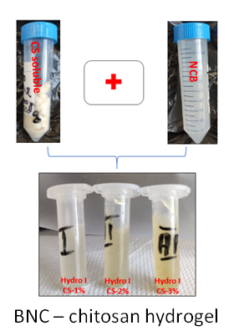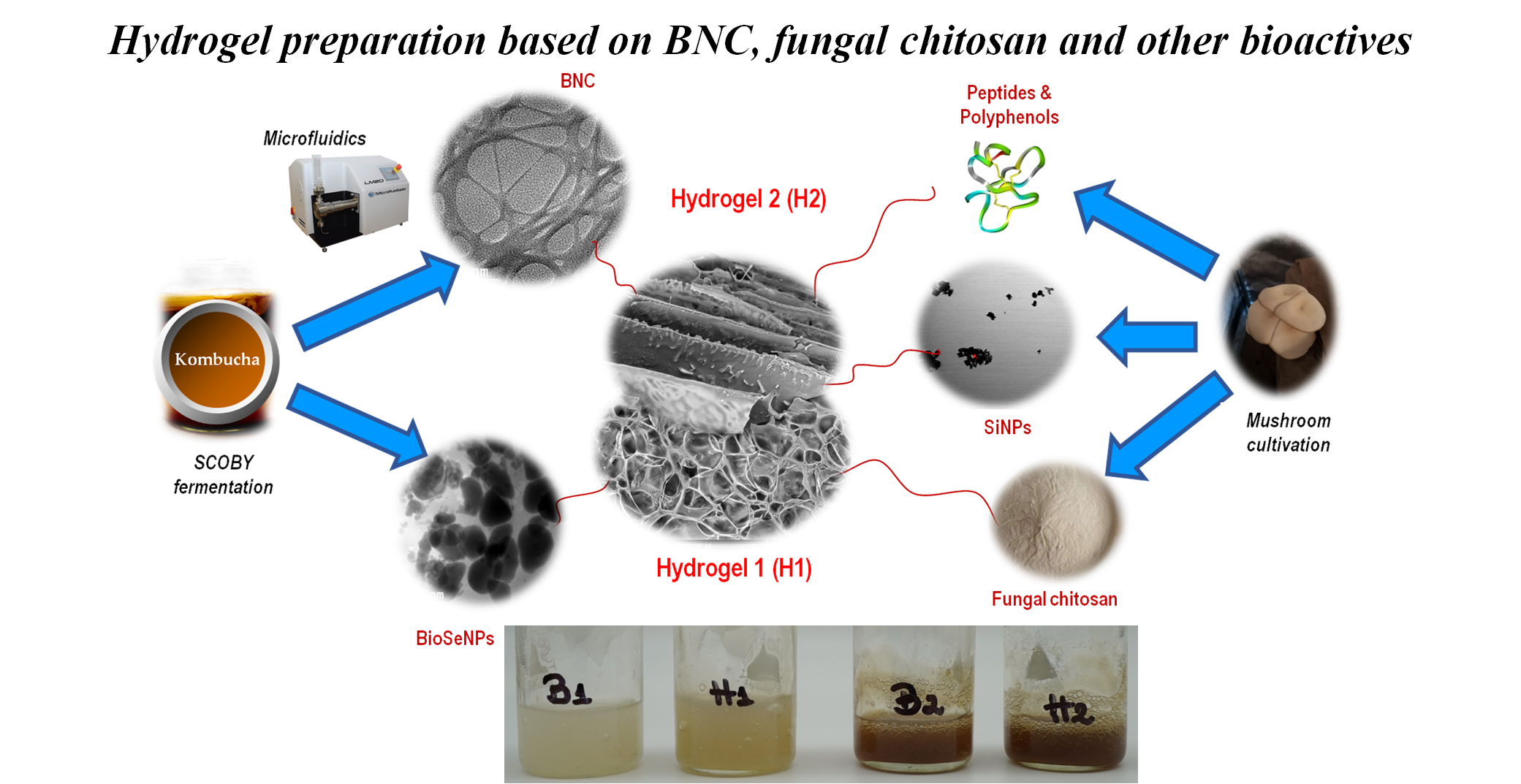Biogenic nano-system for targeted delivery of bioactive ingredients on dysbiosis biofilm involved in gingivitis and periodontitis – BioNanoGum

Project code: PN-III-P2-2.1-PED-2019-4527
Project coordinator – National Institute for Research & Development in Chemistry and Petrochemistry – ICECHIM, Bucharest
Principal Investigator: Dr. Chim. Diana CONSTANTINESCU-ARUXANDEI
Period of project implementation: 2020 – 2022
Total funding of the contract: 600.000 RON
Funding from the State Budget: 600.000 RON
Introduction and objectives
Gingivitis and periodontitis affect more than 30% of globe population and can lead to teeth loss, but also other complications and severe diseases (Alzheimer, diabetes, autoimmune diseases). SeNPs, silicic acid released from SiOxNPs, and chitosan nano-structures determine (frank) resolution of dysbiosis biofilms and inflammation. However, there are also several drawbacks such as a very narrow physiological window (in the case of Se), or induced inflammation through a MAMPs similar mechanism, mediated by the Toll-like receptors (in the case of SiOxNPs). New formulations are needed in order to reduce risks of negative effects and to optimize the beneficial effects.
BioNanoGum project proposal aims to develop an innovative biogenic nano-system for resolution of dysbiosis oral biofilms and inflammation involved in gingivitis and periodontitis, based on an innovative bacterial nanocellulose – fungal (nano)chitosan stimuli-responsive hydrogel, biogenic selenium nanoparticles (bioSeNPs), and encapsulated biogenic silica nanoparticles (bioSiOxNPs). BioNanoGum will use compounds acting complementary to SeNPs, which will lead to the reduction of Se dose. The SiOxNPs will be encapsulated, which allows bearing benefits from the anti-inflammatory, anti bacterial and wound-healing effects of the silicic acid slowly released from bioSiOxNPs. The biogenic nano-system will deliver different components into a complementary manner and will act both on the resolution of pathogenic biofilms and on that of inflammation. BioNanoGum involves the niche between biotechnology and nanotechnology with health applications. This niche market has a significant growing potential, because it addresses several of the main health problems in the European Union and worldwide, from the beginning of the 21st century : an ageing population, with an increased incidence of
non-communicable / chronic disease.
The specific objectives of the BioNanoGum project are: (1) Tooptimize the production of bioactive components in one pot, from Kombucha fermented pollen and mushrooms; (2) To optimize the production of the hydrogel based on ingredients obtained from Kombucha fermented pollen and mushrooms; (3) To assay the efficacy on laboratory models of the hydrogel against dysbiosis biofilm and inflammation; (4) To communicate and to disseminate the project and the results.
Project Work plan
Year 2020: Phase 1 – Design of experimental models (EMs) for objectives: (1) To optimize the production of bioactive components in one pot, from Kombucha fermented pollen and mushrooms; (2) To optimize the production of the hydrogel based on ingredients obtained from Kombucha fermented pollen and mushrooms; (3) To assay the efficacy on laboratory models of the hydrogel against dysbiosis biofilm and inflammation.
Year 2021: Phase 2 – Implementation of EMs for objectives: (1) To optimize the production of bioactive components in one pot, from Kombucha fermented pollen and mushrooms; (2) To optimize the production of the hydrogel based on ingredients obtained from Kombucha fermented pollen and mushrooms; (3) To assay the efficacy on laboratory models of the hydrogel against dysbiosis biofilm and inflammation.
Year 2022: Phase 3 – Optimization of EMs for objectives: (1) To optimize the production of bioactive components in one pot, from Kombucha fermented pollen and mushrooms; (2) To optimize the production of the hydrogel based on ingredients obtained from Kombucha fermented pollen and mushrooms; (3) To assay the efficacy on laboratory models of the hydrogel against dysbiosis biofilm and inflammation.
Phase 1
Design of experimental models (EMs) for objectives: (1) To optimize the production of bioactive components in one pot, from Kombucha fermented pollen and mushrooms; (2) To optimize the production of the hydrogel based on ingredients obtained from Kombucha fermented pollen and mushrooms; (3) To assay the efficacy on laboratory models of the hydrogel against dysbiosis biofilm and inflammation.
During phase 1/2020 of project BioNanoGum, we designed 3 EMs for (1) production of bioactive components from mushroom and Kombucha fermented pollen; (2) hydrogel production based on the ingredients obtained from mushroom and pollen; (3) establishing the hydrogel efficacy on disbiotic biofilms and inflammation.
EMs involved protocols for: optimization of pollen fermentation; production of bacterial nanocellulose (BNC); optimization of extractions from mushrooms and spent muschroom (Ganoderma, Pleurotus) substrates; chitosan grafting and characterisation; hydrogel preparation based on BNC and chitosan; antioxidant, antibacterial and antimicrobial activities; cytocompatibility. A kick-off meeting report and dissemination plan were written and the website was initiated, both in English and Romanian.
Estimated results:
• Website
• Kick-off meeting report
• Dissemination plan
• 3 Designed experimental models
• 1 phase report
Results dissemination and valorisation
• Website
• Kick-off meeting report
• Dissemination plan: at least 3 submitted papers to ISI Journals, 3 patent requests and 3 participations at international/national conferences
• 3 Designed experimental models (EM):
–EM for producing bioactive ingredients from mushrooms and Kombucha-fermented pollen
– EM for producing hydrogel based on the ingredients obtained from mushroom and pollen
– EM for establishing the efficacy of the hydrogel against disbiotic biofilms and inflammation
Phase 2
Implementation of EMs for objectives: (1) To optimize the production of bioactive components in one pot, from Kombucha fermented pollen and mushrooms; (2) To optimize the production of the hydrogel based on ingredients obtained from Kombucha fermented pollen and mushrooms; (3) To assay the efficacy on laboratory models of the hydrogel against dysbiosis biofilm and inflammation.
During phase 2/2021 of project BioNanoGum we implemented the 3 EMs designed in phase 1 for (1) production of bioactive components from mushroom and Kombucha fermented pollen; (2) hydrogel production based on the ingredients obtained from mushroom and pollen; (3) establishing the hydrogel efficacy on disbiotic biofilms and inflammation. The EMs involved the implementation of the protocols for: production of bacterial nanocellulose (BNC); optimization of mushroom growth and extractions from mushrooms and spent mushroom (Ganoderma, Pleurotus) substrates; chitosan grafting and characterisation; hydrogel preparation based on BNC and chitosan; antioxidant, antibacterial and cytocompatibility activities. The website was updated with the new Information about the project. The results were disseminated at 2 conferences and one student session; 2 articles and 2 OSIM patent requests were sent for evaluation.





Estimated results:
• Updated Website
• 3 Implemented experimental models
• 1 phase report
• 2 OSIM patent requests
• 1 paper submitted to ISI Journal
• 2 participations at international/national conferences
Results dissemination and valorisation
• Updated Website
• 3 Implemented experimental models (EM):
–EM for producing bioactive ingredients from mushrooms and Kombucha-fermented pollen
–EM for producing hydrogel based on the ingredients obtained from mushroom and pollen
–EM for establishing the efficacy of the hydrogel against disbiotic biofilms and inflammation
• 1 phase report
• 2 OSIM patent requests:
1. Compoziție sinergică de polifenoli și procedeu de obținere, Patent request A00766 / 2021
2. Compoziție pentru combaterea biofilmului disbiotic și a inflamației asociate acestuia și procedeu de obținere a respectivei compoziții, Patent request A00767 / 2021
• 2 papers submitted to ISI Journal
• 2 participations at international/national conferences
1. Naomi Tritean, Valentina Mitran, Anisoara Cimpean, Ștefan-Ovidiu Dima, Florin Oancea, Diana Constantinescu-Aruxandei, Morphological
characterization of Vero cells treated with biogenic silica nanoparticles, Exploratory workshop NeXT-Chem – Innovative cross-sectoral technologies – IIIrd edition, May 27-28th 2021, Bucharest, Romania, Oral communication, vol. 3, 28. (National conference)
2. Tritean, N.; Dima, S.-O; Cimpean, A., Constantinescu-Aruxandei, D., Oancea, F. Optimized Extraction of Glycoproteins from Ganoderma Lucidum. PRIOCHEM, 17th edition, 2021, Section 2: Bio-resources, biotechnologies and biorefining, Oral communication, abstract published in special number Chemical Proceedings, MDPI (International conference).
• 1 participation at Student session:
Naomi Tritean, Valentina Mitran, Ștefan-Ovidiu Dima, Bogdan
Trică, Elvira Alexandrescu, Anisoara Cimpean, Diana Constantinescu-Aruxandei, Florin Oancea, Biocompatibilitatea nanoparticulelor de silice din pleavă de orez, Sesiunea de Comunicări Științifice a Studenților Facultății de Biologie – Ediția 2021, 28 mai, București, România, Oral communication, Ars Docendi, 68. (Student session)
Phase 3
Optimization of EMs for objectives: (1) To optimize the production of bioactive components in one pot, from Kombucha fermented pollen and mushrooms; (2) To optimize the production of the hydrogel based on ingredients obtained from Kombucha fermented pollen and mushrooms; (3) To assay the efficacy on laboratory models of the hydrogel against dysbiosis biofilm and inflammation.
During phase 3/2022 of project BioNanoGum we optimized the 3 EMs implemented in phase 2 for (1) production of bioactive components from mushroom and Kombucha fermented pollen; (2) hydrogel production based on the ingredients obtained from mushroom and pollen; (3) establishing the hydrogel efficacy on disbiotic biofilms and inflammation. The EMs involved the optimization of the protocols for: production of bacterial nanocellulose (BNC); optimization of mushroom growth and extractions from mushrooms and spent mushroom (Ganoderma, Pleurotus) substrates; chitosan grafting and characterisation; hydrogel preparation based on BNC and chitosan; antioxidant, antibacterial and cytocompatibility activities. The website was updated with the new Information about the project. The results were disseminated at 1 conference and one student session; 2 articles and 1 OSIM patent request were sent for evaluation.




Estimated results:
• Updated Website
• 3 Optimized experimental models
• 1 phase report
• 1 OSIM patent request
• 2 papers submitted to ISI Journal
• 1 participation at international/national conferences
Results dissemination and valorisation
• Updated Website
• 3 Optimized experimental models (EM):
–EM for producing bioactive ingredients from mushrooms and Kombucha-fermented pollen
–EM for producing hydrogel based on the ingredients obtained from mushroom and pollen
–EM for establishing the efficacy of the hydrogel against disbiotic biofilms and inflammation
• 1 phase report
• 1 OSIM patent request:
Compoziţie prebiotică, regenerativă şi antioxidantă şi procedeu de obţinere a acesteia, Cerere de brevet A 2022-00662/20.10.2022
• 2 papers submitted to ISI Journal
• 1 participation at international/national conferences:
Naomi Tritean et al., Bioactive and cytocompatible polyphenols and peptides from spent Pleurotus substrate, Exploratory workshop NeXT-Chem – Innovative cross-sectorial technologies – IVth edition, May 19-20th 2022, Bucharest, Romania, oral communication, p. 29. (Romanian Chemistry Society prize)
• 1 participation at Student session:
Naomi Tritean, et al., Biocompatibilitatea, activitatea antioxidantă și antibacteriană a extractului alcalin de polifenoli din substrat epuizat de Pleurotus, Sesiunea de Comunicări Științifice a Studenților Facultății de Biologie – Ediția 2022, 20 mai, București, România, oral Communication, Ars Docendi, 68. (IIIrd price)
